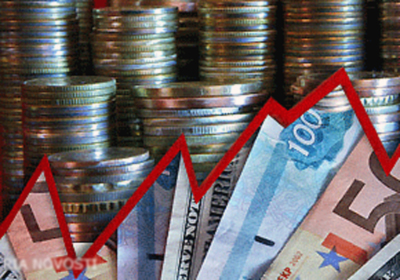IMF joins ‘worst is over’ crowd by predicting weaker recession for Russia in 2015

(Business New Europe – bne.eu – bne IntelliNews – May 22, 2015)
In the latest prognosis of Russia’s economic prospects by the big-league financial institutions, the International Monetary Fund (IMF) has presented a revised and more optimistic scenario than some of its peers.
GDP will fall by 3.4% in 2015 and return to growth in 2016, with a 0.2% increase expected, the head of the IMF’s mission to Russia, Ernesto Ramirez Rigo, said on May 21, as he laid out the Fund’s new report on Russia.
The forecast had been overhauled in Russia’s favour in view of improved economic data and a strengthening ruble, Rigo said. The economy contracted by only 1.9% in the first quarter of 2015, less than expected, according to the federal statistics service, while the ruble strengthened from RUB80 to the dollar in December to RUB50 to the dollar today.
The official also heaped unexpected praise on Russian regulators for their response to the sharp drop in oil prices and Western sanctions imposed over the Ukraine crisis in the second half of 2014. “The authorities’ measures and the anti-crisis package have helped to stabilise the situation and along with that has come a more stable currency. And obviously with that stability has come a stronger confidence,” newswires quoted Rigo as saying. The IMF in the report said it now expects inflation to fall from current levels of approximately 16% to 12.5% by the end of 2015.
Ruble volatility was attributed to a switch to an inflation-targeting exchange rate regime. “It’s not unusual for a country when it changes exchange rate regimes from a fixed system to a floating exchange regime with inflation targeting to experience certain volatility – or certainly more than in the past,” Rigo said.
Saved by savings, but reforms needed
But things could get rapidly worse again for Russia if the oil price declines or geopolitics worsen, he warned: “Within this outlook there are significant risks mainly posed by the oil prices, which clearly for Russia are very important, and the geopolitical tensions. But at the same time these are mitigated by large coffers.”
While a shadow of the Russia’s vast $510bn gold and forex stash at the end of 2013, the current reserves of $362bn will see the country through to resumed growth, most analysts believe. But this assumes there is no new collapse of oil prices or the fragile ceasefire between government forces and separatists in East Ukraine breaks down, a conflict that has been stoked by Russia.
And while the contraction may be less than expected, the mid-term outlook for the economy remains close to stagnation in the absence of structural reforms. The IMF said it expected the Russian economy to grow only 1.5% annually over the medium term, far below pre-crisis growth rates. “It’s fair to say we all know investment should be faster, labour growth is not very dynamic and at the same time productivity growth has been lagging now for a few years…These drags on growth are all structural in nature,” Rigo said.
Specific reforms proposed by the IMF in a concluding statement to the mission’s visit to Russia include: improving protection of property rights, enhancing customs administration and reducing trade barriers, and empowering the Federal Antimonopoly Service (FAS) to eliminate entry barriers to a number of sectors.
The IMF also says that pension reform should be a priority, while the central bank’s course towards reducing banking sector fragmentation by intensifying supervision and tightening capital standards should be continued.
Doomsayers silenced?
Russia can afford a sigh with relief over the IMF’s ‘worst is over’ forecast, although the national leadership has been saying this assuredly for some weeks already, as have several commentators on bne IntelliNews. There was huge uncertainty over the country’s economic outlook in 2015 due to the impact of geopolitical factors stemming from the Ukraine crisis and the resultant breakdown of relations with the West.
In the final analysis, the ‘technocratic analyses’ of international financial institutions and Russia’s central bank and government has proved to have been closer to the mark than the more hawkish Western political analysts. While prominent economist Anders Aslund foresaw a 10% GDP collapse for Russia in 2015, the government is calling 4.5%, the European Bank for Reconstruction and Development (EBRD) 4.8%, and the World Bank only 2.9%.
Russian investment banks are even more bullish on GDP development in 2015-2016. “Our prognosis is even better than the IMF’s – we expect a GDP contraction of only 1.5% in 2015,” Sergei Konygin, analyst at Sberbank CIB, told bne IntelliNews. “Industrial production will be under pressure but the support will come from consumer demand.”
The first-quarter data show the economy is dealing with the crisis much better than expected, agreed Uralsib analyst Aleksei Devyatov, while also warning against complacency like some other analysts. “If we look at financial sector then yes, the worst is over, as the ruble is stabilising, inflation is slowing down, budget cuts are not so extensive,” he said. “However, the real sector is still suffering, industrial production is falling, and we expect the decline to continue till at least autumn. But the lower interest rate, stable ruble and improving consumer sentiment will eventually break the negative trend.”
